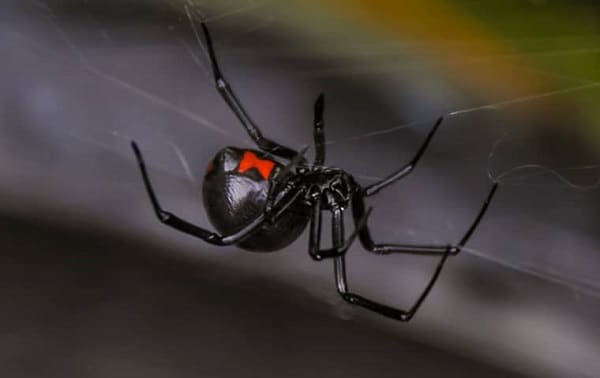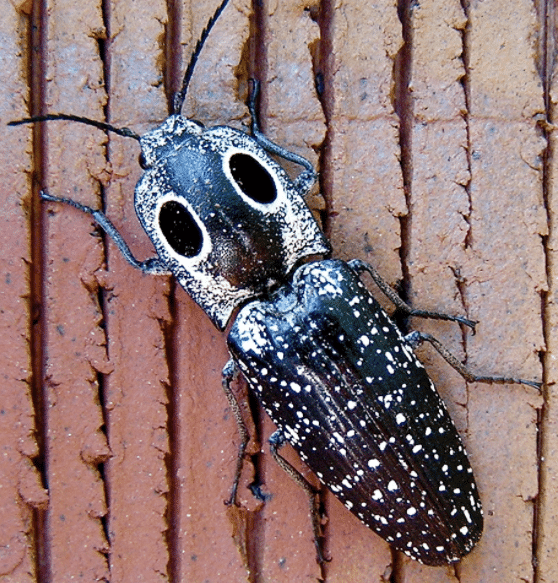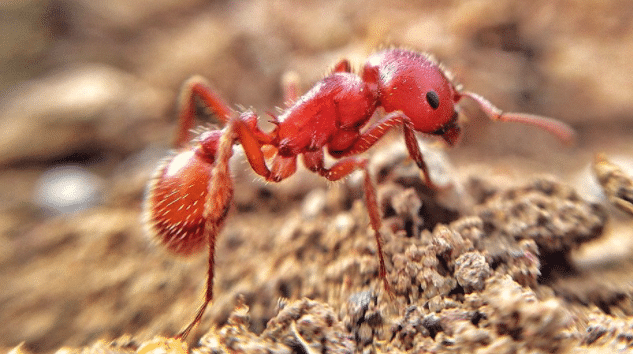Most of us are unaware of threatening creatures living in our backyards. Some bugs bite, sting, and even carry and spread diseases. Mosquito bites are prevalent, but unfortunately, they’re not the only ones to cause havoc. Watch out for these common bugs, biters, and stringers who can carry life-threatening diseases and protect yourself and your family.
Contents
Wheel Bug

The wheel bug is 1.5 inches long and is the largest terrestrial bug in North America. What makes this bug noticeable is the spikey, half-wheel of armor along its back. This assassin bug is a robust and dark creature with long antennae and large eyes on a slim head. Female wheel bugs are larger than males.
The wheel bugs feed on soft-bodied insects like caterpillars, Mexican bear beetle, and cabbage worms. Although the wheel bug is slow to defend itself, its sting can cause pain and numbness that lasts for a few days. The bite is worse than the bee, wasp, and hornet bites.
Assassin Bugs

Assassin bugs bite, and their bite can be fatal to humans and insects. It is a predatory insect that feeds on other bugs, reptiles, birds, mammals, animals, and humans. Most gardeners think that the assassin bugs are beneficial to the gardens as they feed on other flies, ladybugs, bees, caterpillars, and other harmful creatures that might destroy your plants. Assassin bugs are dangerous to deal with, and you should know how to act when you see one. To humans, these bugs can be very dangerous and, in worse cases, fatal.
Black Widow Spiders

These spiders get their name for a fascinating reason. They were named black widow spiders after finding that female spiders kill the male spiders and feed on them after mating. You can identify them with their black and shiny body and red hourglass shape on the abdomen.
The bite from a female black widow spider can be fatal. They are most aggressive when they are trying to protect an egg sac. However, males are relatively small and less dangerous. Small or younger children and adults with a compromised immune system are at the highest risk of dying of a bite from a black widow spider. Pain from such bites becomes intense within a few hours and can last many days.
Brown Recluse Spiders

The most infamous species of recluse spiders, brown recluse spiders, can be deadly to children under seven years old. With a violin-like shape on the back, these spiders have six eyes set in three pairs. Brown recluse spiders are timid and often hide in dark places like under the porch or in the closet.
Some people show an immediate reaction, some delayed, and some no reactions at all, and most people heal without any medical attention. In worst cases, when the person who gets bit is sensitive, it may take several weeks to recover and may leave scars. Those bitten may experience nausea, fever, vomiting, sweating, chills, or discomfort.
Spittlebugs

If you see frothy white spit-like foam in the garden, these are maybe spittlebugs. These are also called cuckoo spits because, like the call of the cuckoo, spittlebugs are a sign of spring’s arrival. The nymphs produce protective foam by mixing air with the chemical it releases to protect itself. The foam serves more than one purpose. It hides the spittlebugs from the predators’ eyes, and it acts as an insulator against cold and heat. It also controls the moisture as, without it, the nymph may dry up. These nymphs feed on the plant sap without causing much damage to the plants, but a few species are serious agricultural pests.
Eastern Eyed Click Beetle

You can’t miss those two huge eyes on the 1.5-inch body of an eastern-eyed click beetle. They have elongated black color body. Interestingly, these eyes are not for real; they are fake just to fool their predators. Predators think that the insect is big based on its eye’s size and might leave the eastern-eyed click beetle alone. The beetle gets its name since it snaps its body to flip itself in the air to escape the predator. While doing this, the beetle produces an audible click.
Red Fire Ants

These fire ants are more of a dark reddish-brown color with six legs and antennae. They get their name from their ability to give painful bites and stings. However, red fire ants don’t bite; they sting. Red ants are more likely to sting a human who is trying to disturb their nest. Some are more sensitive and will show a severe reaction to red ant stings.
The best way to protect yourself is by staying away from their telltale mound nest. You can find them in usual places like golf grounds, camping sites, picnic spots, etc. Though these ants are usually outdoors, they can come inside your home through AC units or HVAC systems. To prevent this condition, you can seal all the cracks and crevices.
Cicada Killer

The eastern cicada killer can grow up to two inches in length and is a predator. Cicadas majorly spend their lives underground. They spend many years underground developing into adults. After they mature, they sting, mate, and fly.
The female cicada captures a cicada, stings it, injects venom, and then carries it to a burrow. There she lays an egg on it, and when the egg hatches, the larva eats the cicada, builds a cocoon, and transforms into an adult. However, cicadas are slow to sting humans.
Six Spotted Tiger Beetle

The six-spotted tiger beetle is known for its shimmering, metallic green color with six yellowish spots on its body. These types of beetles are carnivores and eat insects, spiders, etc. To capture their prey, they use the help of their white ferocious-looking mandibles. They can sting if threatened, so avoid any contact with them. Though these beetles are not poisonous and they cause no serious problems. Their bite seems nothing more than a mild pinch, which is almost unnoticeable. They are known for running faster than you would think, so watch out!
Africanized Bee

Africanized killer bees look so much similar to European bees. However, Africanized bees’ venom is not as dangerous as other bees, but they attack in numbers. It’s because they react to any sort of disturbance ten times more than the European Honey bee. You can prevent these bees from coming to certain places by keeping the garbage containers sealed, not disturbing any hives you see, and not wearing a sweet smelled perfume or cologne.
The Bottom Line
When we think about deadly, dangerous bugs, most of us picture a monster-looking creature preying in a far-flung locale. But that isn’t the case. Most of the dangerous bugs and insects are more likely to lurk in your backyard. These were the common bugs that may cause severe issues when they bite or sting. Make sure you get medical attention in case any bug bites you. Do not ignore the reactions if you’re already sick or sensitive.


